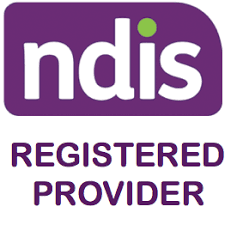Definition of Trauma and Stress Related Disorders
Trauma and stress-related disorders are a group of emotional and behavioural problems that usually arise from exposure to traumatic and stressful experiences. The disorders are serious psychological reactions that develop in some people, following exposure to traumatic events. This may involve witnessing or being the victim of a situation that is actual or feared, that could cause death or serious physical or emotional injury.
For children, experiencing abuse and neglect early in life can be linked with a variety of negative outcomes for them later in life including trauma and stress-related disorders (APA, 2013, 2015; Barnhill, 2020; Thakur et al., 2016).
Read more about the impacts of family conflict and stress on children.
Causes of Trauma and Stress Related Disorders
Trauma and stress-related disorders usually occur when a person is exposed to traumatic and stressful events including neglect at childhood, physical/sexual abuse during childhood, during war or combat, assault (physical or sexual), direct or indirect exposure to a natural disaster, being involved in an accident or facing or experiencing torture (APA, 2013, 2015; Barnhill, 2020; Thakur et al., 2016).
Read the Book: Positive Behaviour Support for Children and Adolescents with Trauma-Impacted Behaviour
Types of Trauma and Stress Related Disorders
Although trauma and stress-related disorders can be broadly described, they can be categorized into key types including relating to how they exhibit themselves in affected people.
- Reactive Attachment Disorder (RAD) – this disorder is characterized by serious difficulties with emotional connection, relation and attachment with the parents/ caregivers.
- Disinhibited Social Engagement Disorder – this is characterized by patterns of behaviour that comprise of inappropriate, overly familiar behaviour with unfamiliar adults and strangers.
- Post-Traumatic Stress Disorder (PTSD) – this is a trauma and stress-related disorder resulting from substantial psychological pain, usually for a period of more than a month after a person is exposed to a traumatic or stressful event.
- Acute Stress Disorder – this disorder is similar to PTSD; however, it results from a shorter period of exposure to a traumatic or stressful event – usually, after the person is exposed to a traumatic or stressful event for a period of only between three days to a month.
- Adjustment Disorder – this disorder is exhibited or notable when the affected person shows emotional or behavioural symptoms that are a result of exposure to a traumatic or stressful event.
(APA, 2013, 2015; Barnhill, 2020; Thakur et al., 2016)
Symptoms of Trauma and Stress Related Disorders
There are various signs and symptoms that exhibit themselves in a person with a trauma and stress-related disorder. In most cases, these signs and symptoms can be categorized into key classifications. The main broad categories of symptoms include:
- Intrusion symptoms – these are symptoms related to the affected person’s memory replaying the event as if it is happening again or reoccurring. In most cases, affected persons experience flashbacks of the traumatic or stressful event. Affected people exhibiting these symptoms may be having recurrent, involuntary and distressing memories, thoughts and dreams of the event.
- Avoidance symptoms – when the affected person has these types of symptoms, usually they are exhibited as efforts to evade or avoid internal reminders of the traumatic or stressful event (memories, thoughts, feelings associated with the traumatic or stressful event) and/or external reminders of the traumatic event (such as people, places, situations associated with the traumatic or stressful event). Affected people with these symptoms may be trying to pre-occupy themselves feelings, thoughts, things or tasks that would help them avoid the trauma-related feelings. In most cases, the affected person’s efforts to try and avoid reminders of these traumatic and stressful events then becomes their central focus in life.
- Negative alterations – these alterations or changes in cognition and mood include difficulty remembering vital aspects of the traumatic or stressful event, feelings of guilt and/or shame, being afraid or fearful, depression and feeling isolated from others.
- Hyper-arousal symptoms – this is when affected people usually exhibit behaviours such as being jumpy and easily frightened or startled, being overly irritable, having angry outbursts, difficulty concentrating, having trouble sleeping and sometimes showing or having self-destructive behaviour.
(APA, 2013, 2015; Barnhill, 2020; Thakur et al., 2016)
References
American Psychiatric Association (2013). Diagnostic and Statistical Manual of Mental Disorders (5th ed.). Arlington, VA: American Psychiatric Association.
American Psychiatric Association (2015). Understanding Mental Disorders: Your Guide to The DSM-5. Washington, DC.
Barnhill, J. W. (2020). Overview of Trauma- and Stressor-Related Disorders. MSD Manual.
Thakur, A., Creedon, J., & Zeanah, C. H. (2016). Trauma- and Stressor-Related Disorders Among Children and Adolescents. Focus (American Psychiatric Publishing), 14(1), 34–45.
Behaviour Help
If you are supporting an individual with this diagnosis, please refer to our services and resources. They aim to help children, adolescents and adults achieve better communication, social, emotional, behavioural and learning outcomes. So whether you are wanting guidance on parenting, teaching, supporting or providing therapy, Behaviour Help is at hand.
Note: This is not an exhaustive list of all the possible causes, symptoms and types but some general information that can be further explored. Based on what you have read if you have any concerns about an individual, please raise them with the individual/s. The caregiver can then raise these concerns with their local doctor who can provide a referral to the relevant professional (e.g. paediatrician, psychologist, psychiatrist, allied health professional and learning specialists) for diagnosis and treatment if appropriate.

